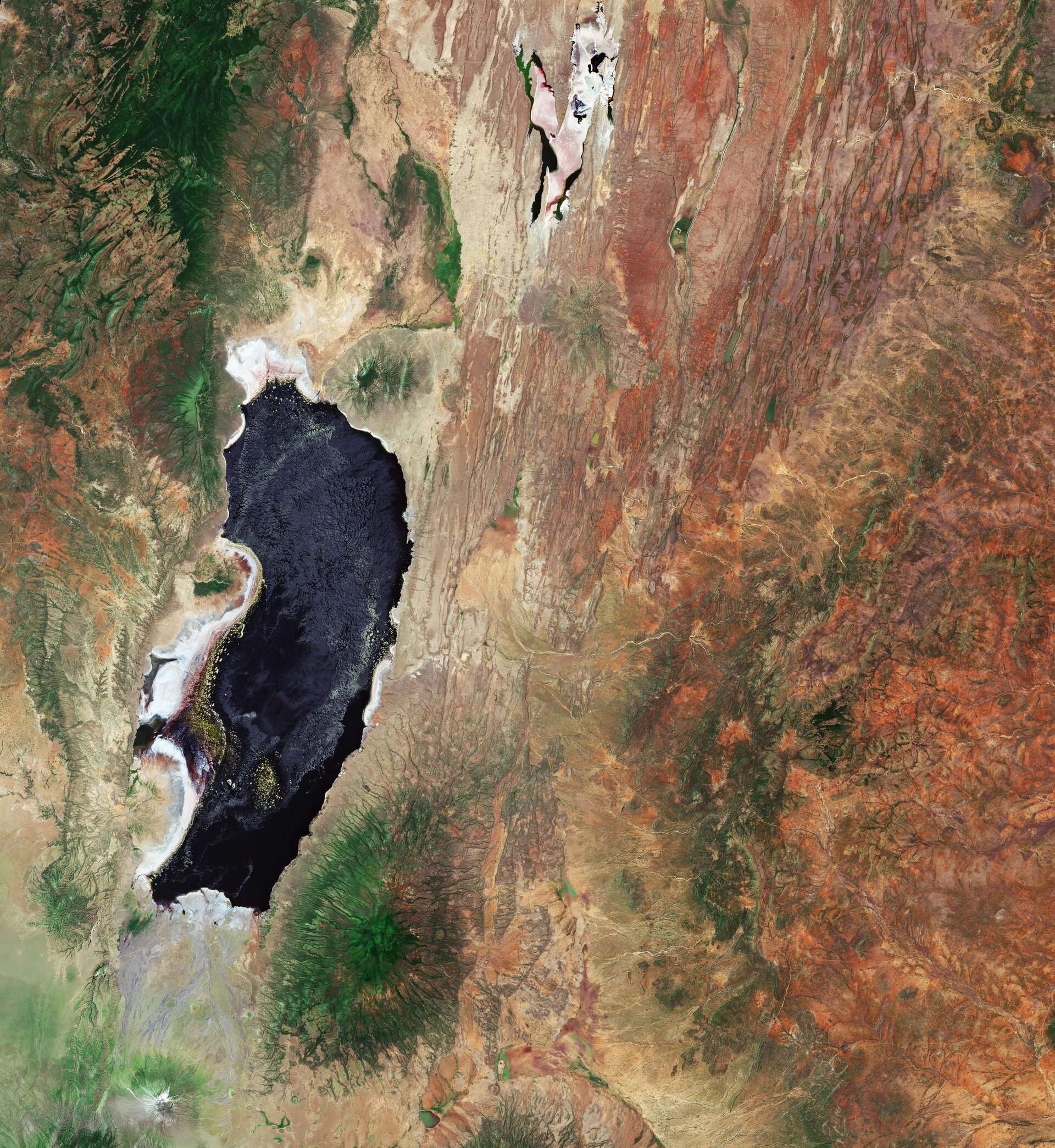
#Lake natron animals skin
The alkaline water in Africas Lake Natron has a pH as high as 10.5 and is so strongly caustic it can irritate or burn the skin and eyes of animals that. In fact, around the lake, there is a large number of mummified animals. Image Album: Lake Natron Gives Up Its Dead. Thousands of mummified animalsīut the beauty of the lake turns deadly when the season is too hot and dry: the salinity of the water, in fact, increases to incredible levels, and the pH can burn the bones. Natron makes the waters of the lake similar to ammonia, with a pH between 9 and 10.5, while the water temperature can reach 60 ° C. Its waters in the past were used for embalming animals and people thanks to its water absorption properties. The only ones who are able to build upon the waters of Lake Natron are a group of 2.5 million pink flamingos, which thanks to a protective layer on their legs and beak, nest in small islands located in the lake, feeding with seaweed formed by cyanobacteria. The lake’s waters contain sodium carbonate hydrate, better known as Natron, a lethal natural compound for many animals who risk their lives every time they approach it.

Thousands of bacteria and cyanobacteria are produced faster with a system very similar to photosynthesis they contain a red pigment, able to color the entire lake, giving the typical dark red color with white stripes that attracts the attention of numerous tourists. Lake Natron in Tanzania is one of the most serene lakes in Africa, but it's also the source of some of the most phantasmagorical photographs ever captured. No animal can withstand this caustic environment and birds that touch the lake waters are trapped forever in the position of the last moments of life. Lake Natron in northern Tanzania hides a terrible secret: the animals who dive in its waters remain petrified. If you want to see more photos from the series, you can either pick up the book, or check out an exhibition of his work at the Hasted Kraeutler Gallery, in New York.Please support the site visiting one of our advertisers. This extremely rare phenomenon is caused by the chemical makeup within the lake. All of the book was created using a a medium format Pentax 67II with waist level viewfinder, and just a 50mm and 100mm equivalent lens, on 6x7 negatives. On a more technical side of things, Brandt intentionally limited how he shot the images. The Lake came into notice worldwide after the great photographer Nick Brandt released some of his captures during his visit to the Lake Natron. I took these creatures as I found them on the shoreline, and then placed them in ‘living’ positions, bringing them back to ‘life’, as it were. The soda and salt causes the creatures to calcify, perfectly preserved, as they dry. Live Science describes the dead animals as having chalky sodium carbonate deposits outlining their bodies. The water has an extremely high soda and salt content, so high that it would strip the ink off my Kodak film boxes within a few seconds. A calcified flamingo, preserved by the highly basic waters of Tanzania’s Lake Natron and photographed by Nick Brandt, reads National Geographic’s caption of one of the photos included in the Facebook post. No-one knows for certain exactly how they die, but it appears that the extreme reflective nature of the lake’s surface confuses them, and like birds crashing into plate glass windows, they crash into the lake. The notion of portraits of dead animals in the place where they once lived is what also drew me to photographing the creatures in the Calcified series: I unexpectedly found the creatures - all manner of birds and bats - washed up along the shoreline of Lake Natron in Northern Tanzania.

Not only that, but flamingos breed in the lake due it acting as a barrier to predators, and feeding on the algae. Some fish live near the edges, and there are algae and invertebrates in the water itself. Not only does Lake Natron have an incredibly high mineral content, but it's also very hot (up to 140☏). Natron is the same material that was key in preserving Egyptian mummies, and one of the reasons this lake is so hostile to life.
#Lake natron animals series
Brandt discovered these animals, and placed them in positions mimicking how they would have been in life, creating a series of photos that are at once both beautiful and disturbing.

Set on the banks of Lake Natron in Northern Tanzania, this body of water is shallow and has an extremely high concentration of salt and natron - which means that animals that die in its waters end up being preserved by the mineral content. His newest photobook is titled Across the Ravaged Land, and inside it are not only astonishing images of many animals, but also one of the most macabre and interesting sets of photos that we've ever seen.

Photographer Nick Brandt is a man with a history in East Africa, having spent decades directing videos and taking photographs across the region. Nick Brandt, CALCIFIED DOVE, LAKE NATRON, 2010


 0 kommentar(er)
0 kommentar(er)
